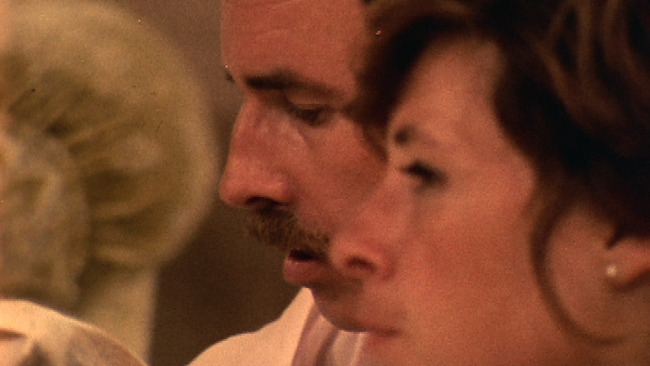Married in Toronto

I work closely on the Eclipse series, and one of the great privileges of that task is the chance to delve into the films and careers of artists I was previously only passingly acquainted with. Allan King is a supreme example: the Canadian director’s work was a revelation for me, and some of it has even become an obsession—there’s a profoundness to the intimacy of these films that demands quality time and a great deal of introspection from the viewer. So I was thrilled to find out that King’s superlative, groundbreaking 1969 portrait of domestic strife, A Married Couple, would be screening at the Toronto International Film Festival while I was there. Not only would Colleen Murphy, the late director’s wife, and Zoe Druick, the author of a brand new monograph on the film, be in attendance for an introduction and postfilm Q&A (Murphy’s guidance was invaluable while we were producing the set), but here was a rare opportunity to see this acclaimed, if now somewhat obscure, film on the big screen with an audience. For as well as the both hilarious and queasy A Married Couple works in the (dis)comfort of a living room, I was desperate to see how its harrowing closeness would play when experienced communally.
As it turned out, the TIFF venue for this screening was a multiplex. The three-hundred-plus-seat auditorium was packed, and the screen was enormous. It’s unlikely that A Married Couple had ever been projected at such a size before: Billy and Antoinette Edwards, in all their dysfunctional glory, were bearing down on us without mercy. As the lights went off, I noticed that couples were sitting all around me: on either side of and behind my seat were male-female pairs. What would they make of this uncompromising anti–date movie?
The response was spirited. After all, these were two Torontonians looming large, and some of the film’s late-sixties urban exterior shots elicited knowing chuckles. And of course, A Married Couple’s touches of dated eccentric costume or home design occasioned some appreciative laughs: at King’s dissolve to Billy sporting his colorful Sherpa vest (when worn with bright red briefs, a signature outfit), people guffawed. Watching the film with so many appreciative viewers, I realized how genuinely funny it often is: Antoinette’s oddly performative facial tics and mannerisms (her interpretive dance moves to “A Day in the Life” are a hoot), Billy’s desperate, neurotic stabs at maintaining social order at the strangest moments (“Bring me that piece of shit!”).
But the moments of hushed shock from the audience were as intense as those of laughter. Billy and Antoinette’s fights do not remain self-contained moments from the life of one couple but take on increasing social significance. Watching their first massive blowup (in which a discussion about who gets the car during the day segues into a deeper one about who calls the shots in the household, revealing Billy’s entrenched ideas about gender) feels like seeing a film about any heterosexual couple from that era. Antoinette’s angry claim that Billy treats her like a slave because she’s a housewife even drew a smattering of applause.
Following the screening, nearly everyone stayed—it’s the kind of experience you need to talk about afterward. Murphy spoke a bit about her husband’s process and the film’s reception at the time of its initial release. People were divided in their responses to the couple, she explained, some siding with Billy, others with Antoinette, citing his abusiveness and pompousness or her needling, irrational behavior and materialism. As the energetic Q&A proved, it’s a film that still incites debate, not least over the question of what constitutes exploitation in this kind of necessarily intrusive nonfiction film, regardless of the principals’ consent. As badly as the twosome may occasionally come off in the film, Murphy told us, at the time they basked in the glow of minor celebrity, even attending the premiere and turning up regularly in the Toronto society pages after its sensational local release.
Regardless of what one thinks of Billy and Antoinette as represented in A Married Couple, King’s way of putting their lives on-screen comes across as remarkably fair, even when jarring. Perhaps this is because he was more concerned with investigating the inner workings of a marriage (soon after his own first marriage) than with fitting his subjects into an idea he already held about the era. As Murphy said after the screening, King was “never interested in capturing the moment for posterity but in capturing life as it happens.”




